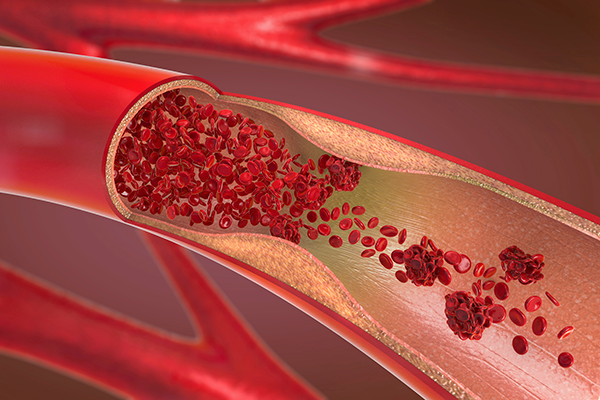Deep Vein Thrombosis
Another commonly seen condition at UConn Health is deep vein thrombosis. This occurs when blood flows too slowly through the body, and a patient develops a clot in a vein. It is most frequently diagnosed in the lower half of the body. This is a serious and possibly fatal condition that requires immediate medical attention because the clot can dislodge and travel up to the lungs, creating a blockage or partial blockage and depriving the body of oxygen-rich blood.
The symptoms of deep vein thrombosis most commonly occur in the leg, and they include, swelling, pain, and redness. The condition is usually diagnosed with a medical exam and an ultrasound, but other options are a CT scan, MRI, blood tests, and venography, an x-ray with contrast dye. Treatment usually consists of medications to thin the blood or break up the clot. Surgery may be required to insert a filter into a vein to catch the clot before it moves to the lungs.

Advanced Treatment for DVT
An advanced procedure to treat deep vein thrombosis (DVT) is helping simplify and shorten a patient’s recovery time over traditional treatments. DVT occurs when blood clots form in your body and can be potentially life-threatening if those clots break loose and travel to your lung. But UConn Health vascular surgeon Mina Boutrous says mechanical thrombectomy has become a game-changer for his patients like Mike Sarrette who felt immediate relief after the procedure.